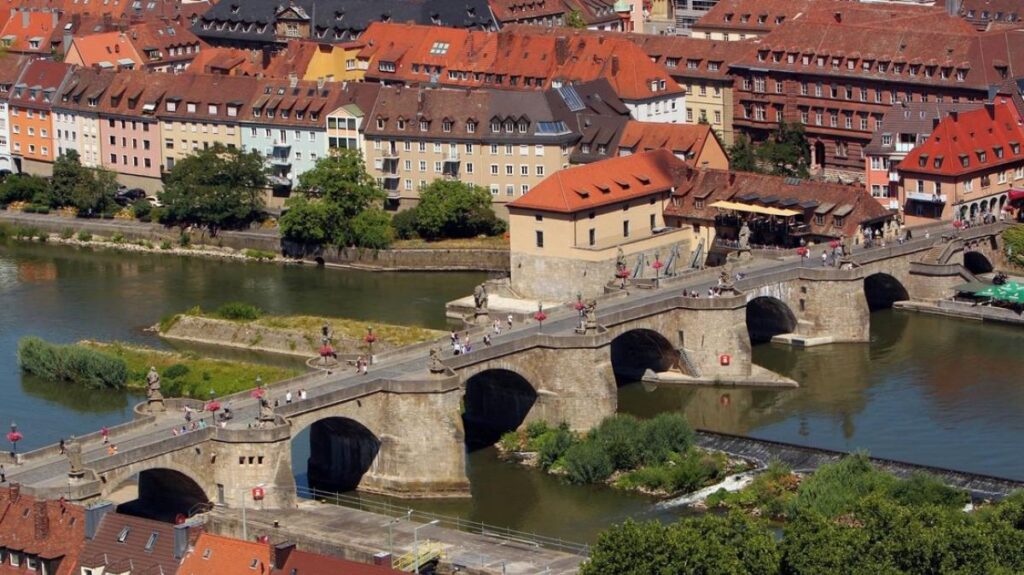An update from Nevine Nizar Zakaria (Egypt, ITP 2012)
Written by Nevine Nizar Zakaria, Alexander Von Humboldt Fellow, Museology Section, Würzburg University, Egypt, ITP 2012
Hello everyone, this is Nevine Nizar Zakaria (Egypt, ITP 2012) working at the Ministry of Tourism and Antiquities as an Assistant to the Minister for the Development of Museums and Archaeological Sites. I am also a lecturer of Museum Studies at Helwan University. It has been so long since the last blog I posted! I have missed the ITP and the ITP network a lot!
I am writing this time from Germany, where I am currently a Post-Doctoral Research Fellow of ‘the Alexander von Humboldt’ at Würzburg University, Museology section. Even though I am the 3rd person in the Ministry rewarded with this fellowship, I am the first woman in Egypt to gain this fellowship in the field of Museology.
My fellowship is addressing the field of Museology, mainly cultural accessibility and social inclusion. As you already know the role of museums in the social inclusion agenda has become increasingly important and fundamental for societal development. I am investigating inclusive practices in German museums, especially the museums with excellent reputations in cultural accessibility. The aim is to build a thorough picture of this subject field to apply it in Egypt.
In addition to working on my manuscript, I am also involved in teaching lectures and workshops at the museology department of the Würzburg University.
The Julius-Maximilians-Universität Würzburg (JMU) offers a very good environment for my research. It is one of the largest universities in Germany and one of the oldest universities worldwide with a wide range of different academic disciplines.
It has a major library for all the academic sections with an online catalogue including valuable resources for museum studies and material culture that offers e-books, e-journals, and databases. I can also borrow several books, which is very helpful for the literature review of my research.
The museology department is quite new, as it was founded in 2011. It is affiliated to the faculty of philosophy. It is an independent museological institute, in which one can obtain all qualification levels from the bachelor’s degree, to the master’s thesis, to the doctorate programme. The department links practical museum works (i.e. workshops, seminars, museum field trips) with theoretical reflection through conferences, a series of publications, and study projects. As an academic host , the department prepared a very rich programme to enable me to explore German museums and map the cultural setting regarding the social responsibility of museums “as agents for social change”. I have already had several excursions to different kinds of national museums and still have some future onsite visits planned.

Here is the link to the museum website https://www.landesmuseum.de/en/

https://www.dasa-dortmund.de/en/
The city of Würzburg is located in the north of the German state of Bavaria. It is a small city but very rich with historical landmarks, cultural properties, distinguished churches as well as many museums. I am really impressed with the vibrant connection between the historical buildings and the modern functioning city.
Everywhere church bells feature in the spiritual heart of the city. A lot of outstanding historical assets and beautiful architecture harmonise with the modern city. A walk through the 12th-century bridge – Old Main Bridge– makes you feel like you are crossing history to a grand baroque city with authentic representations of architecture and art that spans centuries dominating the view of your eyes with vineyards stretching to the borders of the historic city. You can see the historic ‘Marienberg Fortress’ which now encompasses a museum that served as a home to a wide collection of artworks for some regional artists. In addition, other museums and galleries feature in the wealthy history of Würzburg. The use of digital media in museums here has prevailed. There are also many contemporary art galleries with different art movements and styles.
If any of you are interested to explore the museums of Würzburg city, please visit this website:
https://www.wuerzburg.de/tourismus/wuerzburg-entdecken/kunst-und-kultur/museen-galerien/index.html


One of Würzburg University’s buildings is a magnificent historical building called the ‘Residence’. It is a Baroque Palace with a wonderful court garden. The building is inscribed in the UNESCO World Heritage Site (WHS) – the criteria (i) and (iv) – as a historic monument lies within the monument ensemble ‘Old City of Wurzburg.
Here is a short video elaborating on the Palace location, outdoor, and interiors: https://www.unesco.de/kultur-und-natur/welterbe/welterbe-deutschland/residenz-wuerzburg-mit-hofgarten-und-residenzplatz
For more information about the palace in English, please find here:
https://whc.unesco.org/en/list/169/
The city offers a unique atmosphere to think creatively and find inspiration. I am so pleased to have this opportunity.
Nevine
